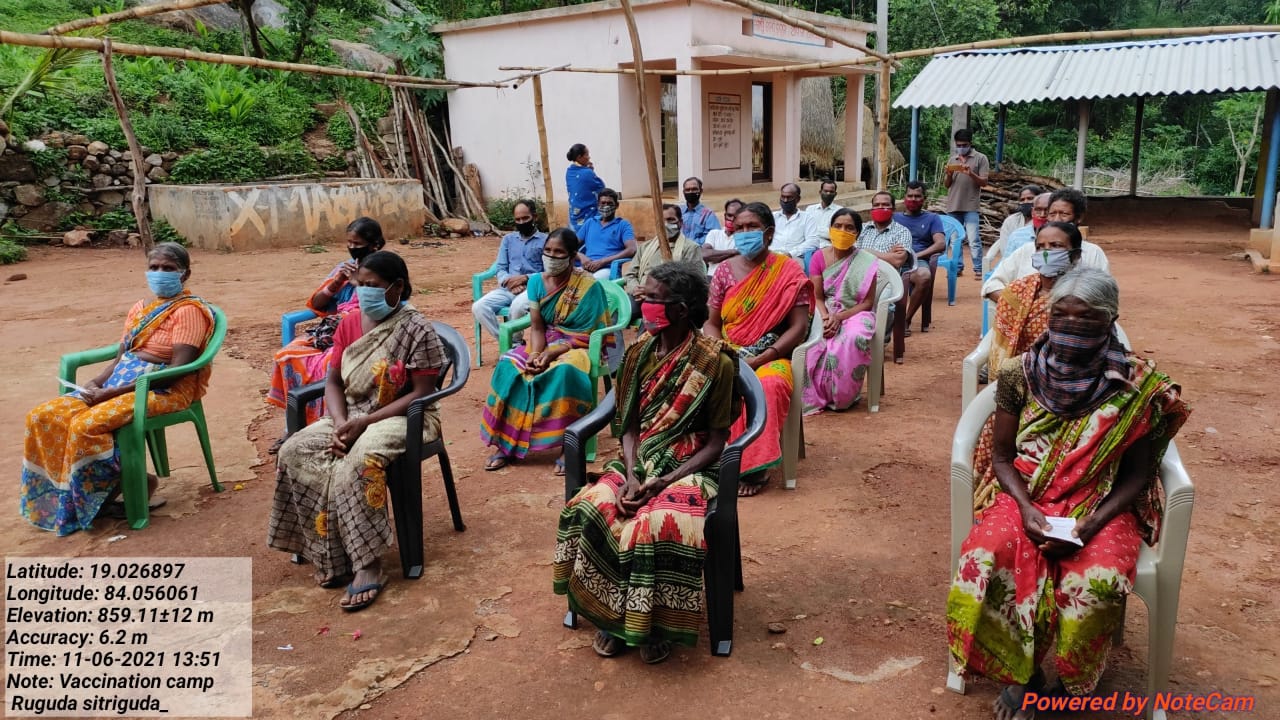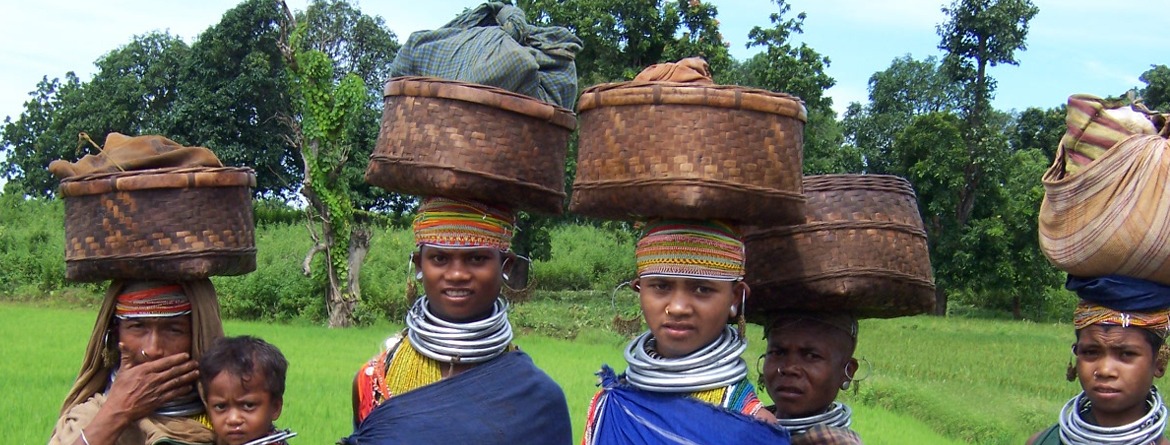Odisha is a unique State with beautiful people. And our tribals represent that beauty. They have unique identity, unique culture and unique way of life. They are one with nature. They are ancient.
Odisha is a land of tribes since ages. With a population of nearly one crore people, tribals constitute the most important segment of Odisha’s culture and history. They preserve nature. They represent continuity and change. The development of the State is not complete without their active participation in it.
The government of Odisha, led by Chief Minister Naveen Patnaik, has been spearheading the growth of the tribal people through various initiatives. Today, when the world is facing its biggest health crisis, the tribals are also not untouched by it. The Government of Odisha has been focusing on the betterment of its tribal population through interventions such as creating healthcare facilitates in remote areas, improving communication facilities and helping in their sustainable livelihoods. While the tribals of the State remain at the core of governance, the Chief Minister is trying to empower the PVTG. Truly adhering to the spirit of Article 46 of the Constitution of India, the Odisha Government has been continuously working for their upliftment. The recent announcement of Covid-19 financial package for the PVTGs of the State is a testimony to the fact on how much Chief Minister Naveen Patnaik cares for them.

Odisha has the unique distinction of having about ten percent of the total tribal population of India. It has the third highest percentage of tribal population in the country.
Thirteen Particularly Vulnerable Tribal Groups live in 12 districts of the State. These relatively isolated and vulnerable sections of the society, living in small hamlets and scattered places in the State, have been receiving special attention in the State. Though their numbers are relatively small, their contributions in terms of heritage and culture, art and architecture, music and painting, ecological preservation are immense.
Keeping in view their vulnerability in such a devastating pandemic, Naveen announced an important financial package which will be of immense help to them. There are around 541 villages with 27,308 households and 1,34,000 population exist in the 17 old Multiple Project Agency (MPA) areas and 1138 newly identified PVTG villages with 36906 households. Also, 1,60,401 people have further been notified in the existing MPAs and three additional MPAs established at Keonjhar, Jajpur and Dhenkanal districts.
The Covid-19 financial relief package for the PVTGs includes free masks and sanitisers for all PVTGs, dry ration kits of Rs 2,500 to all COVID affected PVTG Households, incentive of Rs 1,400 to all PVTGs (Rs 100 per day) affected by COVID-19 for staying in Institutional Quarantine Centre. Other relief measures include door-to-door survey and screening of all PVTG households for COVID-19 symptoms, Community Resource Persons (CRPs) working in PVTG villages to be awarded Rs 1,000 per month as an incentive for four months and health kits and life insurance coverage has been provided for all the field functionaries under MPAs. For Sukudeb Mandala belonging to the Lanjia Soura tribe from Gajapati district, “The five thousand rupees financial assistance given by the Chief Minister is very timely as we were facing difficulties due to pandemic. We depend on forest produce for our livelihoods, but due to lockdowns, we could not go out for collection and selling of the produce. The money announced will help my family very much.”
Apart from these initiatives, the government has also made fund provisions for supporting the isolation centers set up at the village level and COVID Care Centres at MPA level. The financial assistance will directly help 64,214 members of the Particularly Vulnerable Tribal Groups. The care and concern of Chief Minister is expressed in his own words thus: “You are not alone during the crisis. I want to assure you that the State government is with you”. What a reassuring and life- giving statement! These PVTGs are largely staying in 1679 villages of the State and about 314 of them were infected with Covid-19. The government has also made available 18 ambulances to be used in these villages for Covid management. Along with this, the ground level Asha workers and Anganwadi workers are ensuring door-to-door survey in all PVTG villages for health checkup with thermal screening and sensitization.
The second wave of the pandemic saw the entry of the dreaded disease into the tribal hinterlands of Odisha where a sizeable PVTG population resides. The prompt action by the government of Odisha could control the spread of the disease at an early stage and helped in avoiding a bigger problem. In the month of May, when the pandemic was at the peak in the State, 45 members of the vulnerable group were infected with the Covid-19 virus. The Dongaria Kondhas of Rayagada, Bondas of Malkangiri were among the tribals to get infected. Health teams visited the villages in remote villages and persuaded the most vulnerable communities for coming forward for testing and vaccination. While only about 350 people from the PVTG community have been diagnosed with the Covid-19 virus, there have not been any casualties among them. The district administrations have made arrangements for rapid response teams at these villages for quick action on the ground.
The State government, through its unique Odisha PVTG Empowerment and Livelihood Improvement Programme (OPELIP) is working to achieve enhanced living conditions and reduced poverty of the vulnerable groups. The program is enabling improved livelihoods and food and nutrition security for 32,090 PVTG households, 14,000 other tribal households and 16,356 other poor and Schedules Caste (SC) households. The thrust of the government during the pandemic has been on vaccinating the PVTGs and regular testing for infections. Thanks to the dedication of the ground level staff who dared to trek more than five kilometers in the hilly terrains of the tribal districts, the vaccination program has reported a good response. Maheswari Dehury, Jashipur, Mayurbhanj, says that “We are very happy that the honorable chief minister has announced for financial assistance of Rs 5000 for the PVTGs. This amount will be helpful for our likelihood needs during these times of Covid pandemic. The Chief Minister has provided us free testing, vaccination and treatment for Covid. We are very happy for this and thank him.”
The Government of Odisha has been empowering the PVTG population through various activities such as providing them with improved agricultural implements, productive seeds, fertilizers and seedlings. Government intervention has resulted in additional income generation for the tribals through cultivation of Pineapple, cowpeas, tomato, maize, mango, banana, turmeric, arhar, ginger, sweet corn and ragi according to their suitability. The benefits of the intervention are already visible in terms of the improving economic condition of the primitive PVTGs of the State. The products produced by them are now available in all over the State and have a good demand because of the quality. Other schemes of the government such as scholarships to tribal students, residential education, bank loans under various programs and giving rights over land have been continuing to prosper the lives of the PVTGs. One of the most primitive tribes residing in the hilly terrains of Malkangiri District are the Bonda tribes. The financial assistance announced by Chief Minister Naveen Patnaik has also helped them in these difficult times. Mangala Mugduli of Bandhaguda of Khairiput Block in Malkangiri district thanks the CM on behalf of all the Bonda tribes and says that our Bonda families are very happy for the help. Government officials have collected our information and all families in the Mudulipada will be given financial assistance.

Odisha’s push for tribal development especially the PVTGs in the last two decades has resulted in overall improvement in the lives of the tribes. The government spending for them has also increased keeping in view the requirements. Today, the State has become an example for empowerment of the most vulnerable sections of the society. While the effects of the pandemic have been neutralized by intervention, their development will continue.
People like Kumau Sahu of Bijadihi village from Barkote block in Deogarh district are thanking the Chief Minister for the timely announcement of the financial assistance. He says, “We are dependent on collection of Jhuna from the forests, but in the last few months we are unable to sell those in the market because of the pandemic. We are overwhelmed by the assistance of Rs 5000 for us. We are really indebted to the Chief Minister for this.”
Budai Sisa, village Andrahal, Khairput, Malkangiri, “The government has given five thousand rupees per family for Covid. The tuition fees of our children are also given by the government, thank you Naveen Patnaik.”
Naveen’s care and help in such an unprecedented pandemic have evoked unimaginable love for him by the PVTGS. They believe that with his presence, their layers of loss will go away. All of life’s beauty ultimately would belong to them. They will celebrate love and relationships as usual.


Comments are closed.